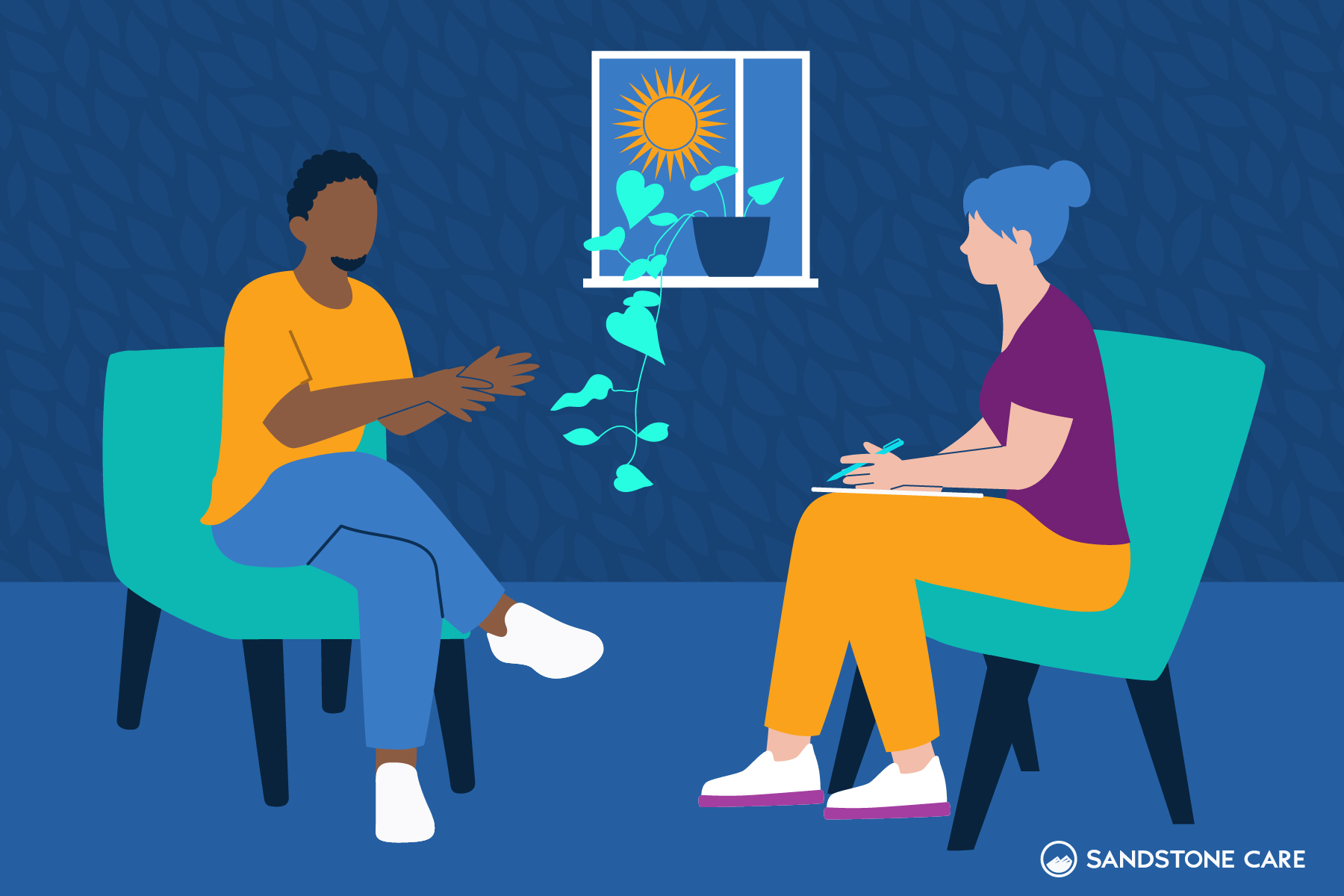Table of Contents
- What Is Self-Harm?
- What Are Some Reasons People Self-Harm?
- Are There Risk Factors For Self-Harm In Adolescents?
- What Are Forms Of Self-Harm?
- Why Do Teenagers Self-Injure Or Self-Harm?
- What Does Self-Harm Indicate About Someone’s Mental Health?
- How Can I Tell If My Teen Is Self-Harming?
- How To Identify Cuts Or Scars From Self-Harm?
- What Are The Physical Symptoms That May Co-Occur With Self-Harm (Beyond Cutting)?
- What Do I Do If My Loved One Is Cutting Or Self Harming?
- How Do I Stop Self-Harming?
What Is Self-Harm?
Self-harm occurs when a person purposefully hurts themselves, usually as an unhealthy coping mechanism for intense emotional distress.
Self-harming behaviors, or self-injurious behaviors, are most common among those with an underlying mental health disorder. The physical pain from self-injury can distract from emotional pain and mental stress.
Self-harming behaviors are usually non-suicidal self-injury; however, these behaviors could be a risk factor for suicide attempts when left untreated.
According to MedlinePlus, “People who harm themselves are usually not trying to kill themselves. But they are at higher risk of attempting suicide if they do not get help.”
Young adults and adolescents are more likely to self-harm than anyone.
It is critical to get professional help for teens and young adults engaging in self-harm. Doing so will help them develop healthy coping mechanisms and put an end to a dangerous cycle of self-harm.
Self-harm is difficult and isolating, and opening up about it can be uncomfortable and challenging. It is important to know that help is available for mental health conditions that lead to self-harm. Understand self-harm is not uncommon, and you are not alone.
What Are Some Reasons People Self-Harm?
According to Psychiatry, non-suicidal self-injury is more common in adolescents and young adults, although it can happen to anyone.
The article states that “The major purpose of NSSI [non-suicidal self-injury] appears to affect regulation and management of distressing thoughts.”
A lack of coping skills results in poor management when dealing with stress and difficult emotions. As adolescents navigate their teenage years, issues regarding self-esteem, problems within the family, and increased stressors become more common.
The reasons one may self-harm are different for everyone. Some people may have a clear link to a specific experience that makes them want to self-harm, while others may have a harder time making sense of it all.
Some reasons one may self-harm include but are not limited to:
- Way of coping with memories or emotional pain
- Desire for control
- Release feelings of shame, worthlessness, sadness, or anger
- Counteract feelings of emptiness
- Struggling with other mental illnesses or disorders
- Pressures at school or work
- Bullying
- Sexual, physical, or emotional abuse
- Increase in stress
- Feeling over or under-stimulated
- Money issues
It may be hard to know or understand why someone self harms.
It is important to be open and listen to what they are feeling. The more you understand, the better you can support their needs. You can do so by educating yourself and being open to learning more.
Are There Risk Factors For Self-Harm In Adolescents?
Adolescents that are at increased risk for self-harm include those with a history of mental illness.
People who are already struggling with anxiety, depression, or BPD are predisposed to self-injurious behavior. Often, self-harm indicates that someone is struggling with one or more of these mental health conditions.
In adolescents, risk factors for self-harm may include those struggling with eating disorders, those who have experienced traumatic life events or have problems within the family, or people suffering from substance abuse.
According to a New York Times article on self-harm from November 22, 2019, Benedict Carey discusses the prevalence of self-injurious behaviors specifically amongst female adolescents.
Adolescents have the highest rate of self-harm behavior, and females are more likely to self-harm than males, which makes females the highest at-risk population amongst adolescents.
It is also more likely to self-harm if you hang around others who self-harm.
Some people may see their peers self-harm and feel pressure to try or even be challenged to do it themselves. They may want to be accepted by others or fear judgment if they don’t do it.
What Are Forms Of Self-Harm?
Common forms of self-injury include:
- Cutting yourself with a knife or razor, usually on the arms and legs
- Carving symbols into your skin
- Scratching yourself until you bleed or leave scars
- Head-banging, hitting, or punching yourself
- Kicking or punching hard surfaces to injure yourself
- Burning yourself with matches, lighters, or lit cigarettes
- Pulling out your hair or eyelashes
- Piercing your skin with needles or other pointed objects
- Picking at wounds to disrupt the healing process
Aside from external injury, self-harm may also take form internally or emotionally, for example, unsafe sex, reckless driving, making impulsive and reckless decisions, gambling, or abusing drugs or alcohol.
While substance abuse can be considered self-harm in itself, it may also lead to more common forms of self-injury. Drugs and alcohol reduce your self-control, and consuming these substances may make you feel that you are gaining that control back.
Why Do Teenagers Self-Injure Or Self-Harm?
Teenagers may self injure or self-harm as a coping mechanism for dealing with feelings of shame, anger, sadness, or low self-esteem.
They may use self-harm as a way to feel something or to take away from painful emotions. According to MentalHealth, “Many people cut themselves because it gives them a sense of relief.”
Adolescents are more likely to deal with issues pertaining to self-esteem, family problems, and mental health issues, making them more susceptible to self-harm.
Self-harm is used as a way to turn emotional pain into physical pain.
Not only does it give a sense of relief from emotions, but it can also give back a sense of control that they may not feel they have in other aspects of their life.
Sometimes self-harm is used to express feelings that are hard to relay in words.
They may not know a better way to express their feeling and default to self-harm. Self-harm can act as a release for bottled-up tension and emotions. It is used as a coping mechanism for difficult feelings.
Adolescents’ lack of coping skills calls for alternative, dangerous, and unhealthy methods in dealing with one’s emotions. Without knowing how to deal with painful emotions, they turn to an option that makes them feel something, even if it is hurtful and dangerous.
What Does Self-Harm Indicate About Someone’s Mental Health?
Self-harm is not a mental illness.
Although self-harm is linked with mental illness, it is not one in itself. It indicates an underlying issue in someone’s mental health conditions and a need for help with coping skills.
Unhealthy coping skills put adolescents and teenagers at increased risk of self-mutilation and risk of suicide. Although these behaviors are usually non-suicidal, they can be life-threatening.
Self-harm does not indicate that someone is suicidal.
When someone self-harms, it usually does not mean they are suicidal. Often, people explain that they self-harm because it makes them feel more alive. However, suicidal thoughts may be a factor in some cases, so it is important to talk with your loved ones to understand them better.
Self-harm is usually linked to disorders such as; depression, anxiety disorders, bipolar disorder, borderline personality disorder, or co-occurring disorders.
By getting treatment for mental health disorders, you can diminish the need to self-harm. Treatments aim to provide solutions to these disorders instead of self-harm itself.
Self-harm is an unhealthy coping mechanism when under severe emotional distress.
By acknowledging and treating mental health issues, you can put an end to using self-harm as a coping mechanism for painful emotions.
How Can I Tell If My Teen Is Self-Harming?
Some indications that can help you tell if your teen is self-harming include:
- Wearing long sleeves or warm clothing, even in hot weather
- Frequent blood stains on clothing
- Noticeable marks such as scratches or bruises, specifically on their wrists or legs
- Possession of sharp objects for no apparent reason
- Showing symptoms of eating disorders
- Changes in mood
- Spending long periods locked alone in bedroom or bathroom
- Low self-esteem
If you notice these signs in your teen and they constantly try to explain them away, attempt to conceal their injuries, or frequently claim accidental injuries, it could be a warning sign that they are self-harming.
It may also be a warning sign if one refuses to attend events or becomes involved in situations where they experience pressure to wear something that shows more skin, such as a party, a dance, or going to the pool.
Self-harm means that your teen is dealing with a lot of emotional pain.
It can cause them to isolate themselves or become easily irritated, as their capacity for emotion and involvement is at its height.
How To Identify Cuts Or Scars From Self-Harm?
Cuts or scars from self-harm can look like scratches that are thin straight lines.
Marks may also be made in a pattern across the skin. They are usually found on the wrists, arms, legs, or front of the torso.
Since cutting offers a temporary sense of relief, it may become a habitual, dangerous cycle.
Consequently, marks may appear over and over again in the same spots. You may notice this if you see a mixture of old and fresh scars.
However, self-harm doesn’t always take the form of cutting. If you are frequently noticing unexplainable marks such as bruises or burns on your teen, it could be possible that they are self-injuring.
What Are The Physical Symptoms That May Co-Occur With Self-Harm (Beyond Cutting)?
Some symptoms that may come along with self-harm include:
- Bruises, wounds, and scars
- Mood swings
- Disassociation
- Social anxiety or withdrawal
- Hearing voices in one’s head
- Feelings of disconnect, hopelessness, worthlessness
- Unpredictable or impulsive behavior
- Unstable relationships
Some cuts or wounds can end up in a more serious injury, even if it is unintentional.
It is easy for a cut to become infected, especially if using drugs or alcohol. Some injuries may require medical treatment and leave permanent scarring. Deeper wounds may need stitching.
In severe cases, self-injury can lead to accidental fatal injury.
Although self-harm does not indicate that someone is suicidal, sometimes the injuries can become so dangerous that they result in unintentional fatality.
Aside from the physical symptoms, self-harm takes an emotional toll on mental health. Keeping the secret of self-harm is lonely and tiring. It lays a heavy burden and ultimately affects your relationship with friends, family, and yourself.
Self-harm may also become addictive.
As a cycle, it works in stages, beginning with emotional overload, then leading to self-harm. From there, you may get temporary relief but then undergo feelings of shame and grief, which ultimately ends in emotional suffering leading back to self-harm.
It may turn into a behavior that is difficult to stop. Eventually, it could feel that self-harm is controlling you and every aspect of your life.
What Do I Do If My Loved One Is Cutting Or Self Harming?
If a family member or loved one is cutting or self-harming, the first step is to reassure them and listen without judgment. You can begin by asking them how they are feeling. Sometimes just showing that you care and are concerned means a lot to someone.
It may be hard to learn that someone you love is self-harming. Feelings of fear or anger may arise out of concern, but it is important to assure them that you are there for them. Additionally, the more you understand, the better you can help.
The next step is finding professional help.
You can offer to find help with a mental health professional who can diagnose and recommend a course of treatment.
One form of treatment is cognitive-behavioral therapy.
CBT is a well-studied form of psychotherapy that focuses on current problems and finds solutions by combining the two therapeutic approaches.
CBT focuses on the idea that thoughts influence behavior and identifies these thoughts to challenge and overcome them.
Through CBT, you will be able to work with a mental health professional who will help you become aware of unhealthy or inaccurate coping mechanisms and learn how to respond to problems more effectively and healthily.
Depending on the needs of your loved one, therapy is available through inpatient treatment or outpatient programs.
An outpatient program is ideal for those who may not have a center accessible to them, have health concerns, have no transportation, or aren’t comfortable getting inpatient treatment.
If someone seems to be in immediate danger or bleeding heavily, call 911.
How Do I Stop Self-Harming?
If you or someone you love is self-harming, it is important to know that self-harm is not uncommon and that you are not alone. Self-harming can affect anyone.
Reach out to a trusted adult for help.
That could be a family member, friend, nurse, teacher, counselor, or helpline. They can help you get the professional help that will give you the support to learn healthy ways to cope with painful emotions.
It may be difficult to feel comfortable confiding in someone.
If you are trying to find someone to talk to, think of a supportive, accepting person. It doesn’t necessarily have to be someone close to you; go to an adult who you trust and who can offer help.
Talking to someone can be a scary and daunting thing to do. The fear of a negative reaction prevents people from taking that step to ask for help.
You don’t always have to talk face-to-face or feel pressure to talk about things you are not ready to discuss. You do not have to show scars or marks if you are not comfortable doing so. You can also send an email, text, or letter to start the conversation.
Do what you are comfortable with doing.
It may feel uncomfortable after you talk to someone, and the change may be difficult.
Sometimes it can be hard for the person you confide in to learn that you have been self-harming. You may have to give them time to process things. Those first challenges may be scary and intimidating, but know that things will get better once you get past those initial steps.
Aside from therapy, it could be helpful to find ways to distract from painful emotions and build better coping mechanisms. Examples of this include:
- Going on walks or going outside
- Writing in a journal
- Listening to your favorite music
- Watching your favorite movie
- Doing creative activities, like making art
- Call a friend and talk about something unrelated to self-harm
- Take a cold shower or warm bath
- Hold onto an ice cube
- Focus on your breathing
If you need alternatives to release anger or stress, you can:
- Take part in an exercise that could help relieve stress; boxing class, yoga class, going to the gym, running
- Punch or squeeze a pillow
- Rip up a piece of paper or magazine
- Squeeze a stress ball
- Make noise, like playing an instrument
It is important to know that these feelings are not forever.
Self-harm can be a difficult and burdensome secret to hide. It may be the only way you know how to cope with emotional pain. Sandstone Care is here to support teens and young adults with substance use and mental health disorders. Call (888) 850-1890.















